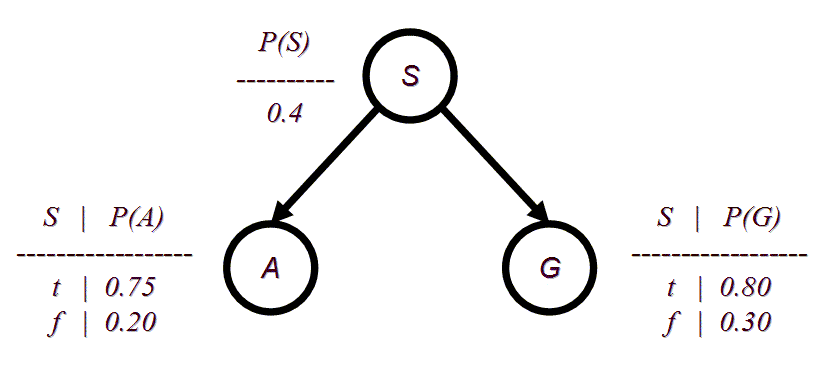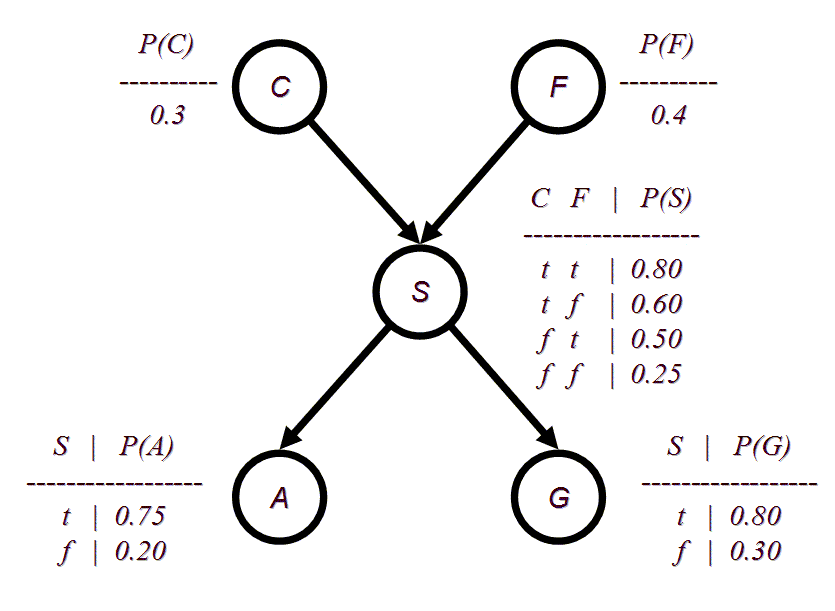
Due:
March 1, 2012 by the start of class
Your responses to these questions must be typed and submitted in
hardcopy. For this assignment, you may check your answers
with another student and work through the problems together only
AFTER you have made a serious
attempt by yourself. Make absolutely certain that you can do
these types of problems by yourself, since they will be on the
exams.
Be certain to include a statement of sources at the top of your
assignment, listing all sources you consulted (websites, fellow
students, etc.) while completing the assignment. You do not
need to list any course materials (textbooks, lecture notes, or
the professor).
An AI student notices that people who drive SUVs (S) consume
large amounts of gas (G) and are involved in more accidents (A)
than the national average. In this problem, uppercase
letters denote the variable names, lowercase values denote the
variables with value. For example, P(a, ~s) is the same thing as
P(A = t, S = f). She has constructed the following Bayesian
network:

1.) (20 pts.) Compute P(a, ~s, g) using the chain rule.
2.) (20 pts.) Compute P(a) using inference by enumeration.
3.) (20 pts.) Using conditional independence, compute P(~g, a | s) and P(~g, a | ~s). Then use Bayes' rule to compute P(s | ~g, a).The enterprising student notices that two types of people drive
SUVs: people from California (C) and people with large families
(F). After collecting some statistics, the student arrives at the
following form for the Bayes Net:

4.) (20 pts.) Using the chain rule, compute the
probability P(~g, a, s, c, ~f).
5.) (20 pts) Using the rules for determining when two variables are (conditionally) independent of each other in a Bayes Net, answer the following (True/False) for the Bayes Net given above: